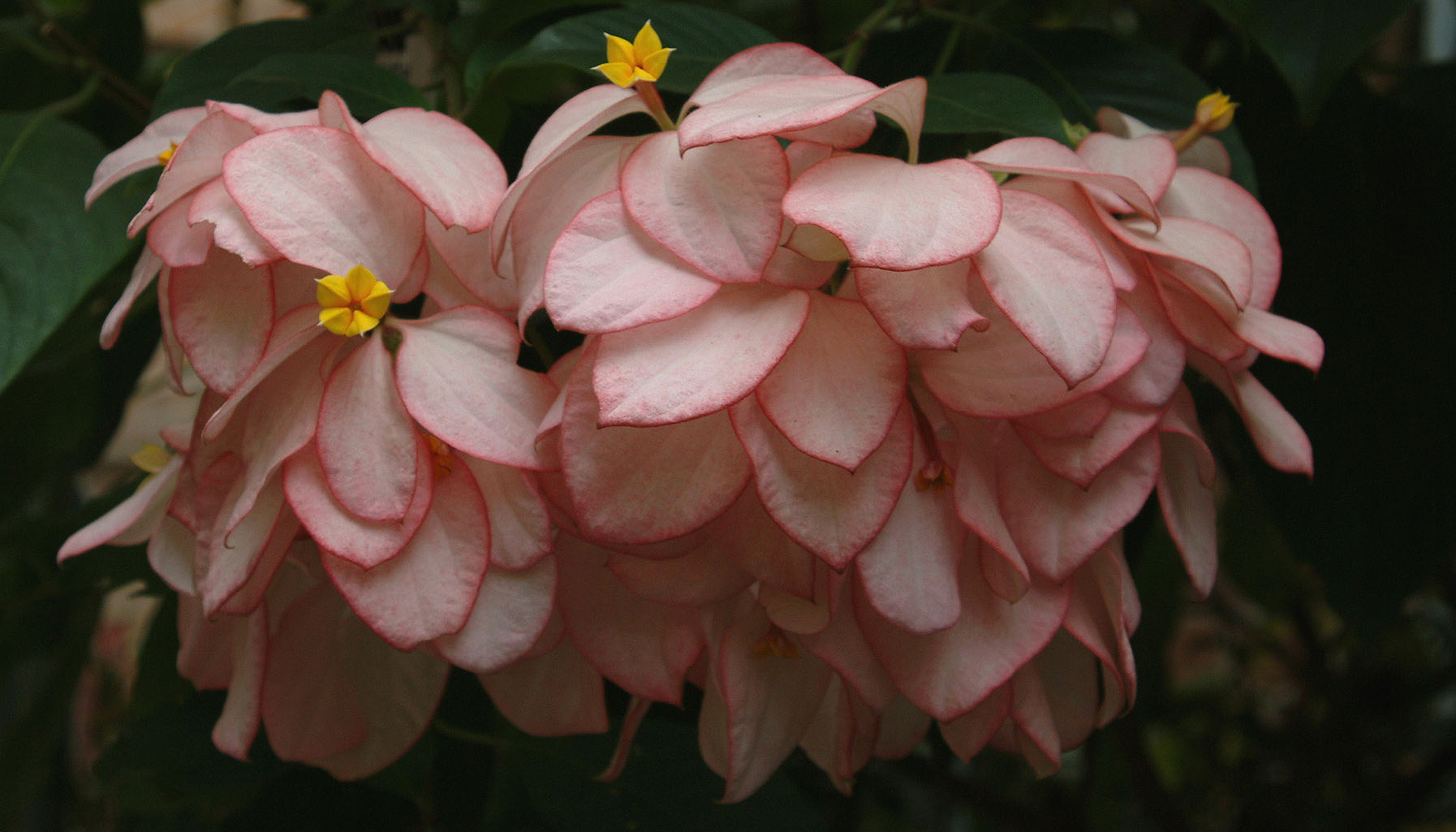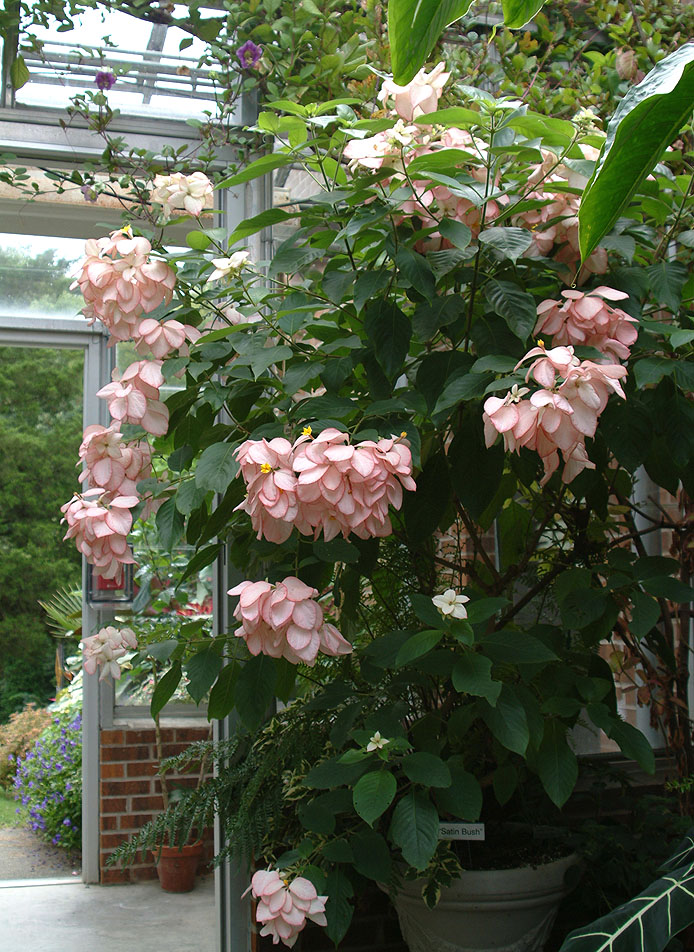NOS
MUSSAENDA
PAGE
Copyright 2003. New
Ornamentals Society. All Rights Reserved.
Lawful for online access only by current society members.
All downloading, printing, saving to media, imaging, screen capture, or
offline use is prohibited.
Duplication by any means, method, or technology is unlawful.
Do not link to this page.
Mussaenda phillipica 'Queen Sirkit' just may be the most lovely plant I have seen this year. It's surely in my 2003 Top Ten and I've seen at least 5000 taxa this year alone. 'Queen Sirkit' is new to me and I suspect new to you; at least in this pretty regal cultivar.
The "Satin bush" bloom looks like a floppy, less symmetrical hydrangea with odd yellow, alien-looking projections coming from within the mass. Those angular, tiny gold bits are the true flowers. The drooping and overlapping structures are sepals. I usually avoid this word for some obvious reasons but the plant is nothing other than gorgeous. The floral anatomy could have only been designed on cloud nine or somewhere within omnipotent view of the Garden of Eden.
This tropical member of the Rubiaceae is hard to capture even with the society's newest 12.1 megapixel camera. The sepals are white to blush pink with richer pink to red margins much like Cornus kousa 'Rubra' but without the odd speckling. It is not a simple or sharply delimited picotee in the familiar style. The intergrading of red shades is very sophisticated, sharp enough to give a good outline but not so much as to give a bicolor look from the distant view.
The combinations of light, pigment, and crystalline shine that the human brain and eye can appreciate are very complex here. It's fascinating and detailed up close but quite a simple fluffy look from ten feet on back. I'm beginning to think the most ornamental plants are usually this way. They're one thing from a distance and something far more rewarding on close inspection; in other words, a quality that holds up to many different perspectives and viewing distances.
This shot was captured at the McMillan Greenhouses (a superb and well-curated collection of rare tropicals and carnivorous plants) of the University of North Carolina at Charlotte. It's the smaller of the two botanical gardens in that town and one of the Queen City's richest treasures. I love the classy, majestic passage of Daniel Stowe but usually shoot more pictures at UNC-C.
Click both images to enlarge.
LCH

